
How to fix basic dishwasher problems
Your dishwasher helps you stay on top of dish duty after every meal, and it can be frustrating when your appliance is no longer performing at its best. Some causes require replacement parts and professional assistance, while others can be resolved with the help of some DIY dishwasher repair knowledge. Read on below to learn more about basic dishwasher problems and how to fix them.

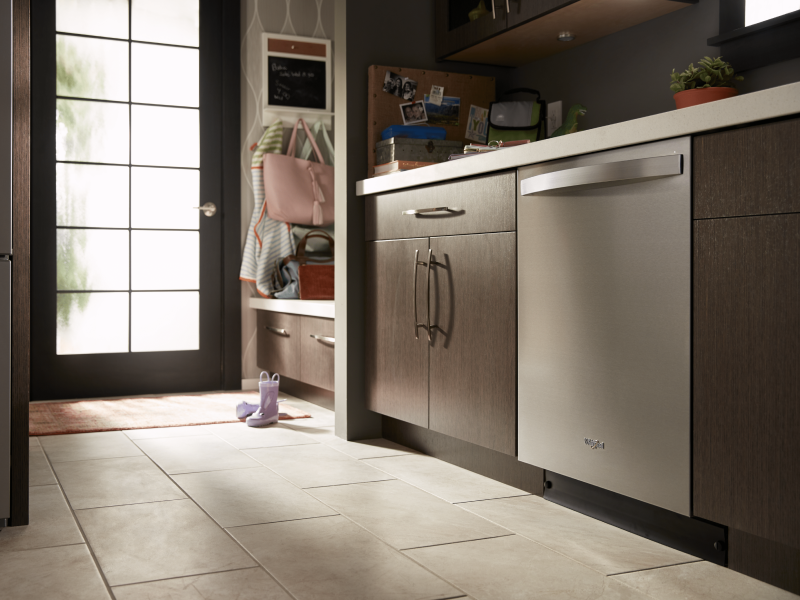
What are the most basic problems with dishwashers?
Issues like leaks, poor drainage, unclean dishes, foul odors and overall appliance operation, though infrequent, can be the most common problems with a dishwasher that isn’t operating properly. In some cases, you can resolve these issues with a little elbow grease and the help of your product manual.
Make sure to always follow your owner’s manual use and care recommendations to help ensure optimal performance. Be sure to consult your product’s warranty when investigating problems with your dishwasher.
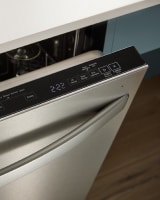
Discover dishwasher styles and trends
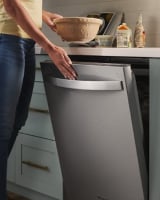
Dishwasher troubleshooting: ideas on how to fix a dishwasher that isn’t working
If you’ve run into a problem with your dishwasher’s performance, use the following steps for basic issues to learn whether it’s something that you can fix yourself.
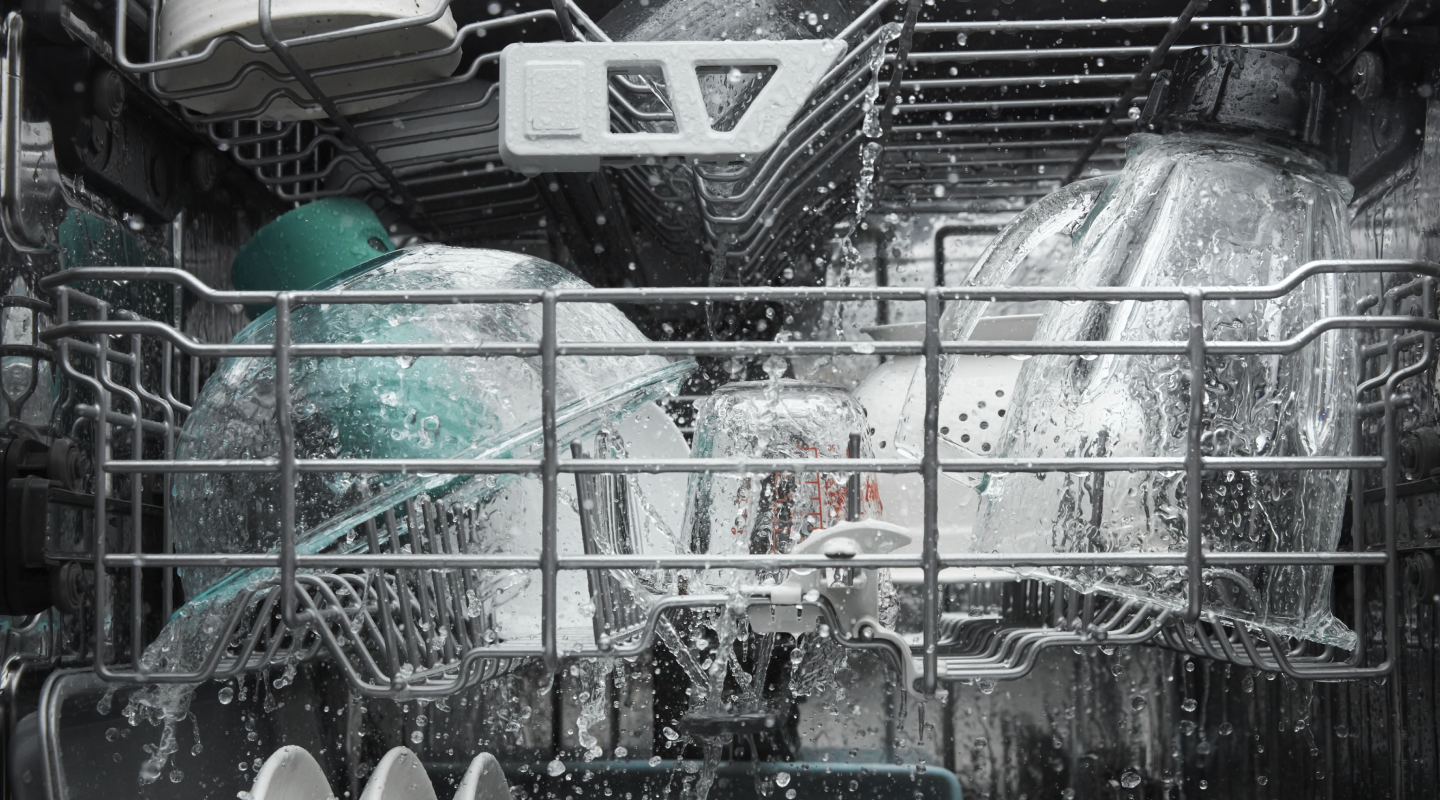
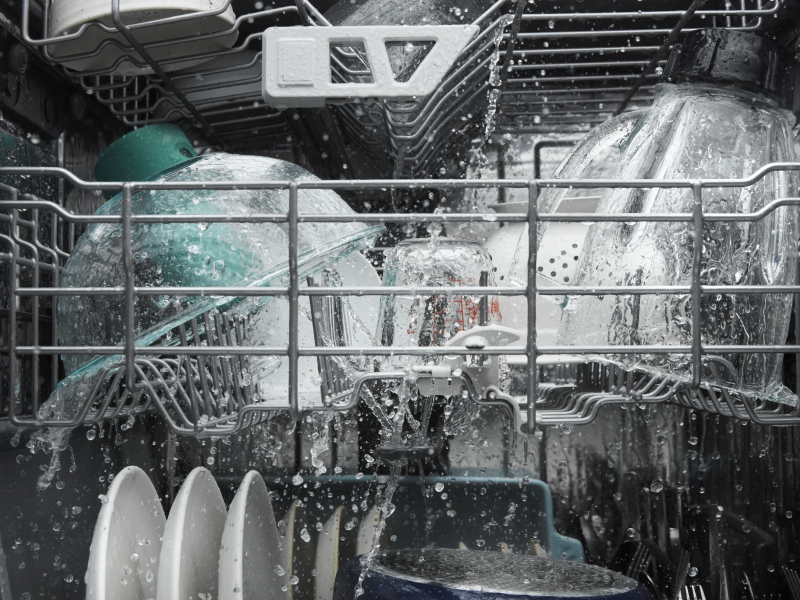
1. Dishwasher leaks
A leaky dishwasher can be caused by several factors, like a broken dishwasher door seal, using the wrong detergent or improperly loading the appliance. Other causes of dishwasher leaks may require the help of a licensed technician. Here are some ideas for what you can do if your dishwasher is leaking.
Switch detergents: If you are using detergents not recommended for your dishwasher, like dish soap or homemade dishwasher detergent, your dishwasher may be creating too many suds causing excess soap and water to overflow and leak onto your floor. Switch to a detergent that is specified for use inside an automatic dishwasher.
Avoid overloading: You need to load your dishwasher properly to help the machine run efficiently. Overloaded dishwashers may use too much water, leading to water overflowing.
- Check the door seal: Over time, your dishwasher’s door seal may show signs of wear that can result in the appliance leaking while in use. Check your dishwasher seal for cracks, gaps, rips or holes. If any are found, you may need the help of a licensed technician to replace the seal.
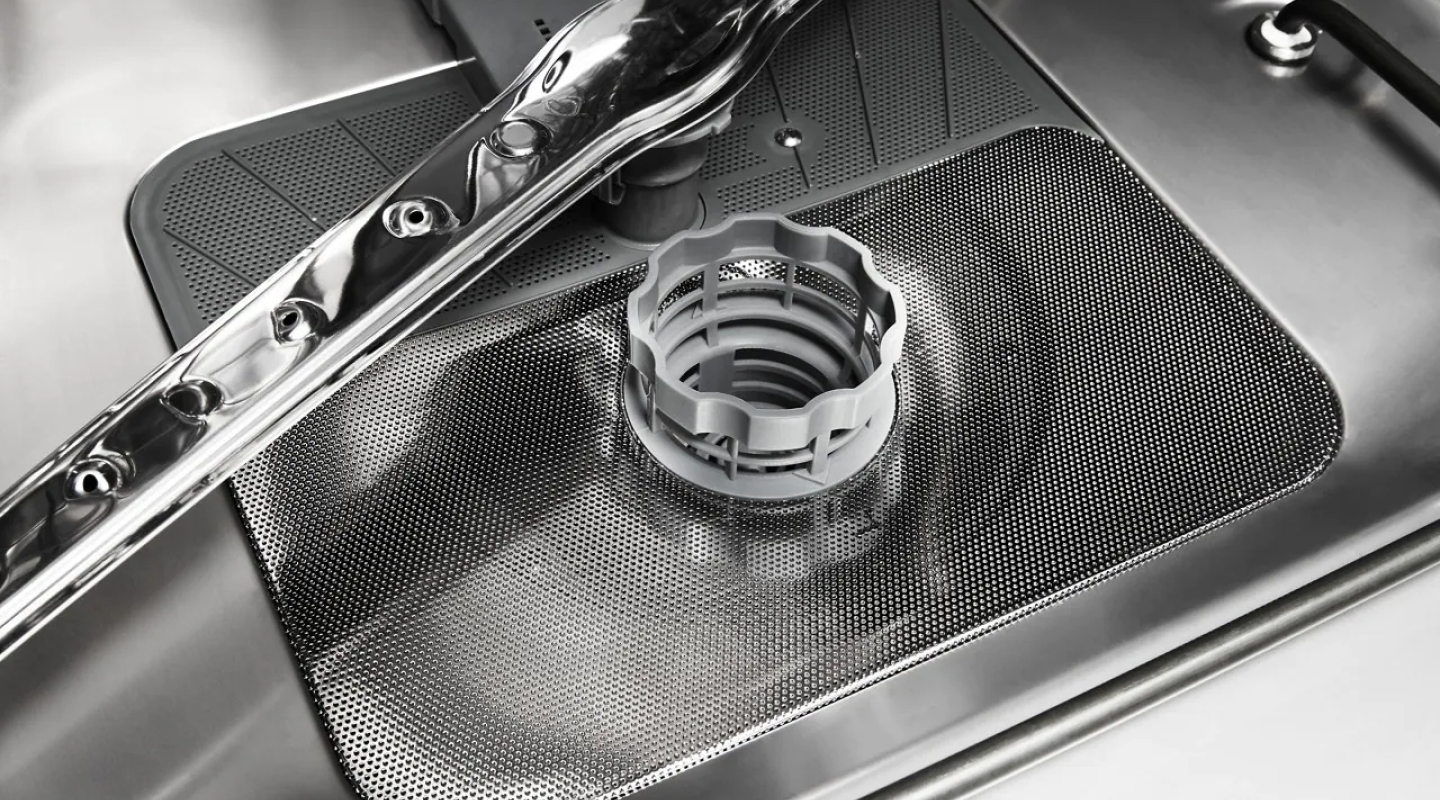
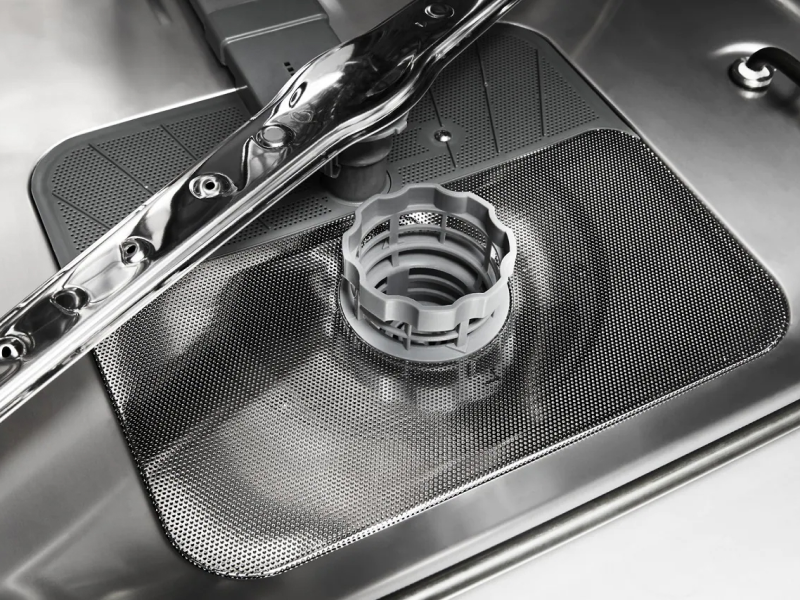
2. Poor drainage
After each use, it is normal to see about an inch of standing water at the bottom of the dishwasher tub. If you are seeing more standing water than usual, you may have a clogged dishwasher filter.
To unclog your filter, you need to:
Locate the filter: Open your dishwasher and remove the bottom rack. Dishwasher filters are typically located on the bottom of the dishwasher tub.
Remove and rinse the filter: Remove the filter by hand or with a screwdriver, depending on the instructions listed in your product manual. Rinse or soak the filter in warm, soapy water to remove any buildup.
Replace the filter: Once your filter is cleared of all debris, install it back into your dishwasher.
If you are still seeing draining problems after cleaning out your dishwasher filter, you may have a clogged drain. This is an issue best left to the professionals, so be sure to contact a licensed technician for this repair.
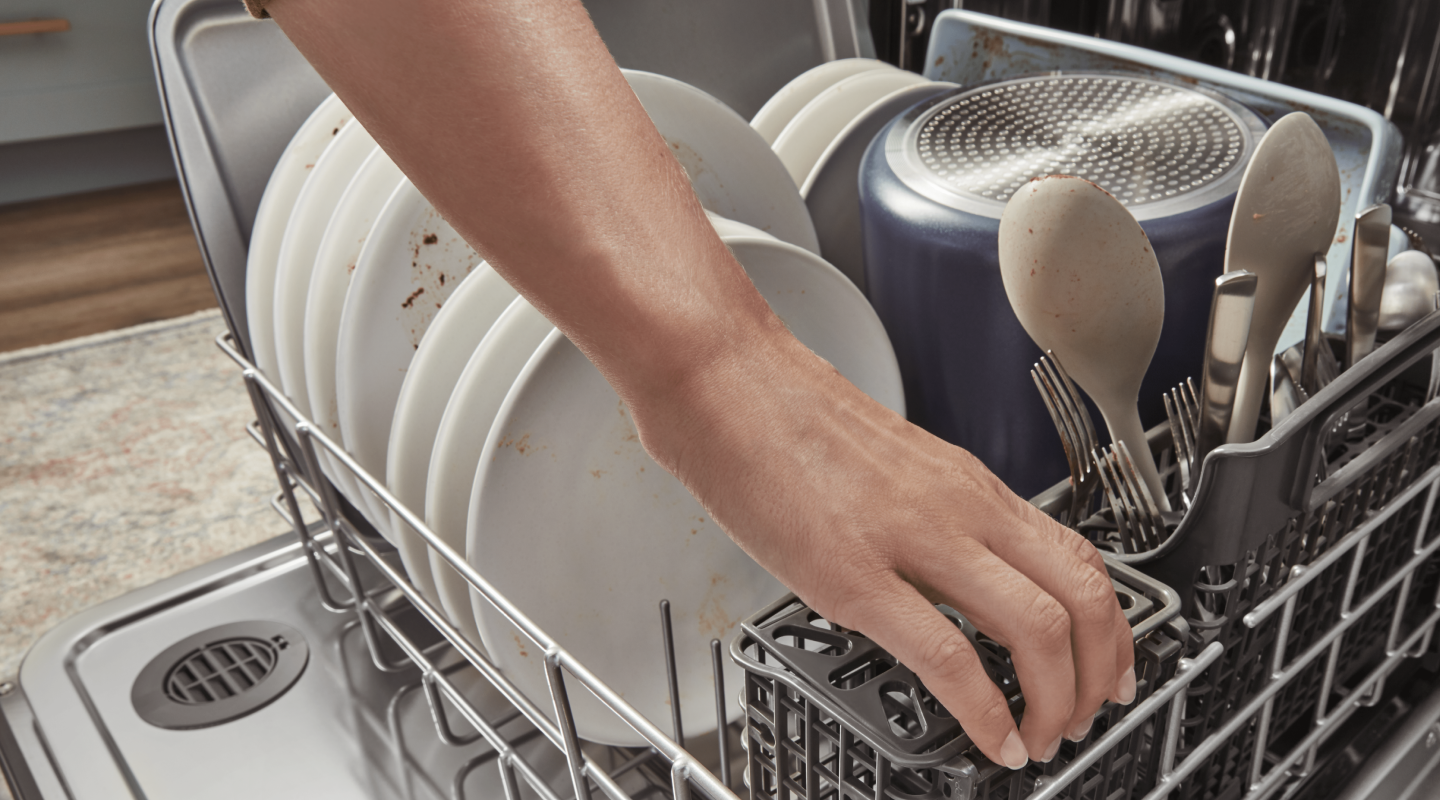
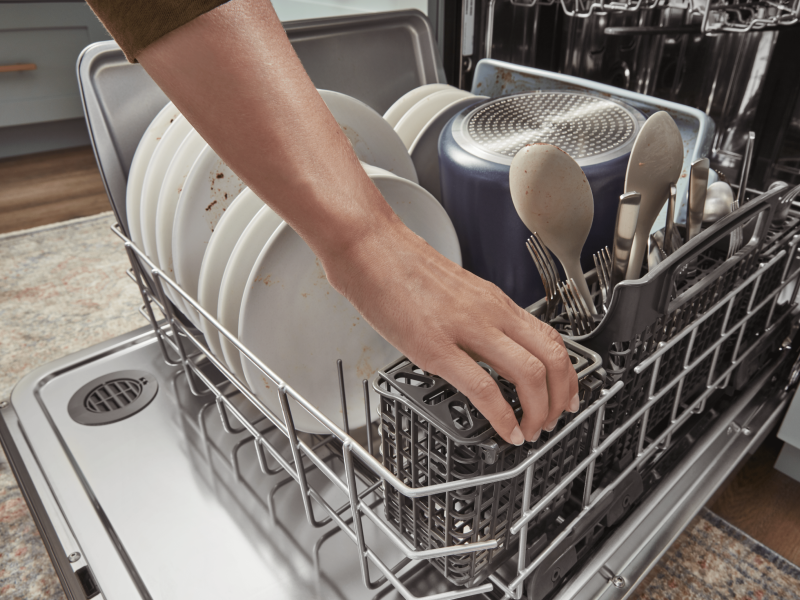
3. Unclean dishes
There are several possible causes for dishes that leave a wash cycle streaky, cloudy or stained. Investigate the following causes to determine which one is the source of your unclean dishes:
Dishes were improperly loaded: Dishes should be loaded with the soiled surface facing down and towards the spray arm. Avoid overpacking dishes and utensils as this can lead to scratches on your plates, glasses and bowls.
Too much detergent was added: Overusing detergent can lead to a filmy buildup on your dishes and glassware over time. Only use the amount of detergent described on the package instructions.
- Wrong cycle was selected: If you chose a quick wash or rinse-only cycle for a heavily soiled load of dishes, they may come out dirtier than expected. Be sure to choose a normal wash cycle for regularly soiled items and a heavy-duty wash cycle for dishes with hard-to-clean or baked-on residue.
Learn more about reasons why your dishwasher is not cleaning properly.
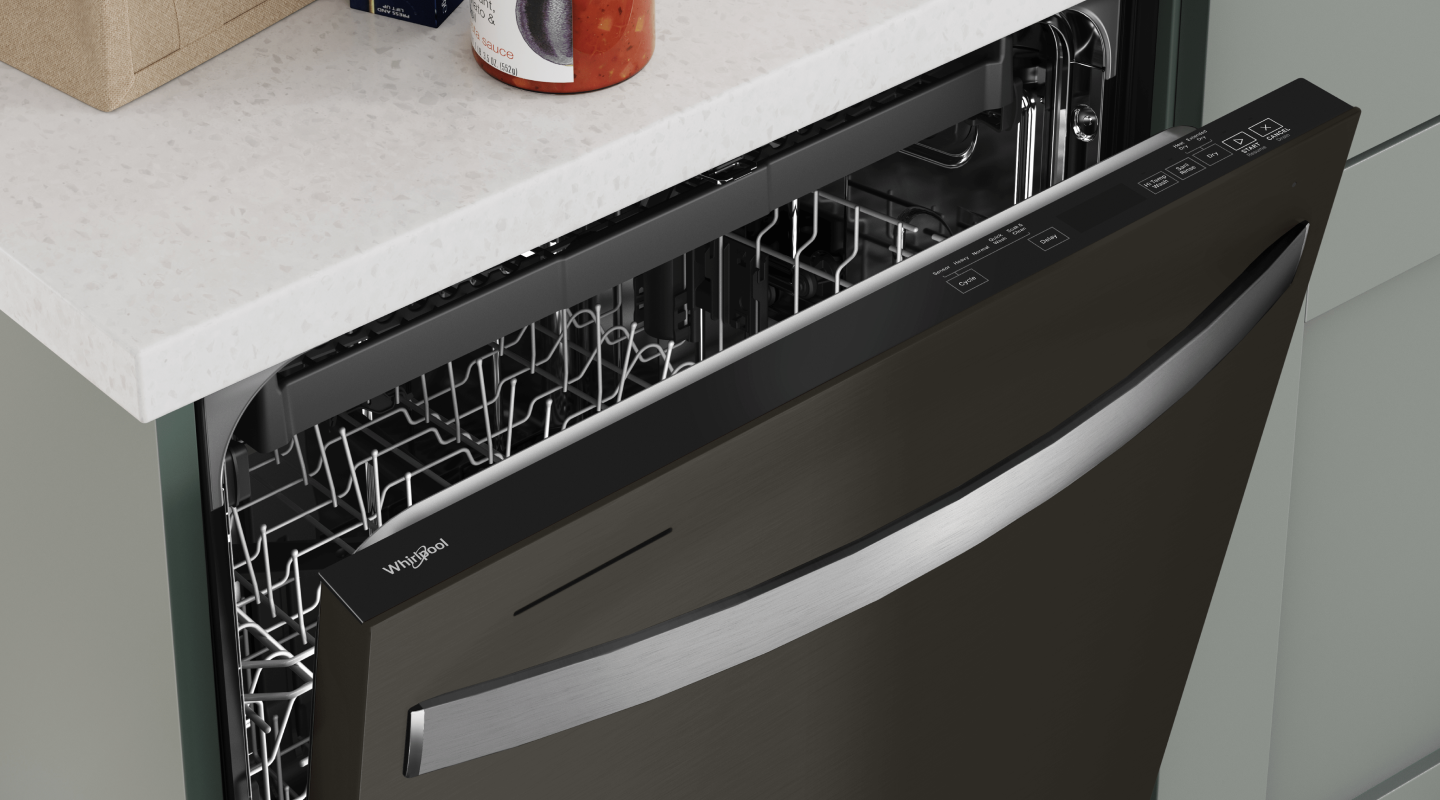
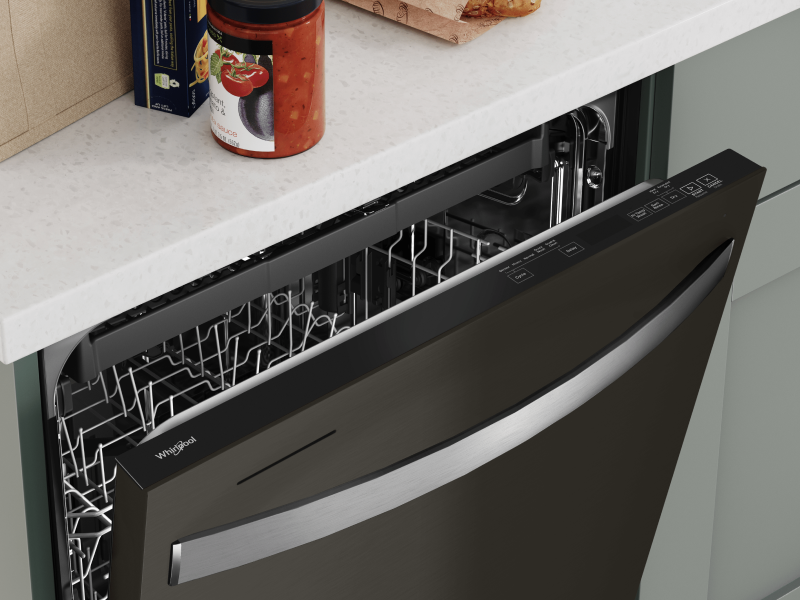
4. Dishwasher odor
If your dishwasher smells bad, you may have to clean the inside of your appliance to get rid of built-up food particles. To get rid of dishwasher smells and prevent them in the future, simply:
Clean out filter: Remove or rinse out any buildup from your dishwasher filter.
Run a wash cycle with a dishwasher cleaner: Empty your dishwasher and place a dishwasher cleaner, like these tablets from affresh®1, at the bottom of your machine and run a normal wash cycle.
Keep up with dishwasher maintenance: To prevent dishwasher odor, regularly clean your dishwasher filter and the interior per the maintenance instructions in your product manual.
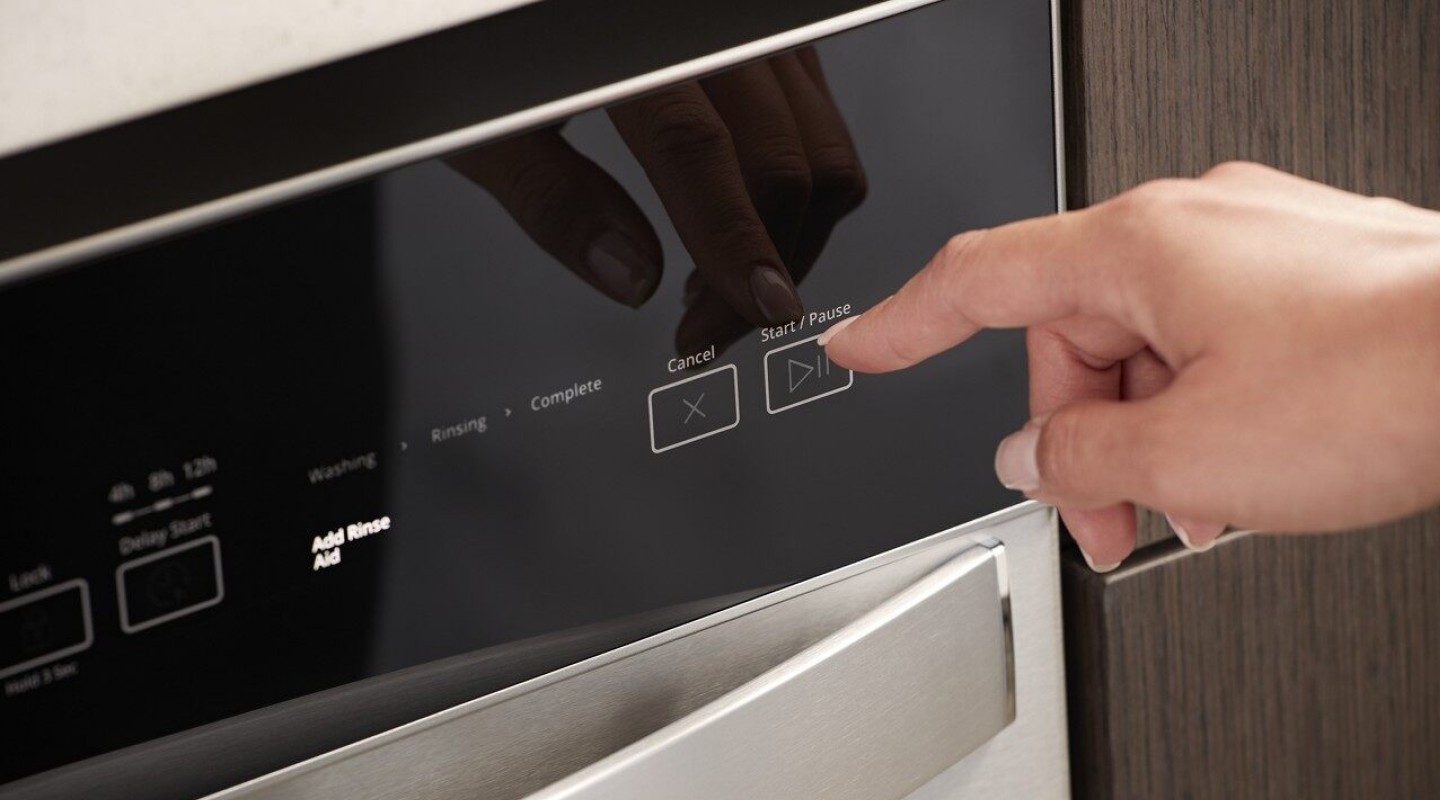

5. Dishwasher won’t start
Though not as common as the previous problems, you may run into an unresponsive dishwasher at some point. There are a few causes for a dishwasher that won’t start or fill with water, some of which require the help of a professional. But before you schedule a service call, try the following troubleshooting tips:
Turn off sleep mode: Ensure that your dishwasher wasn’t accidentally set to sleep mode. Open and shut the dishwasher door, then press the Start or Resume button to see if it will respond.
Reset the dishwasher: Sometimes you can resolve this problem by simply unplugging the dishwasher and letting it sit for one minute before plugging it back in.
- Turn off control lock: Some models offer a control lock setting that helps to prevent buttons on the control panel from being accidentally pressed. Unlock the controls using the instructions provided in your product manual.
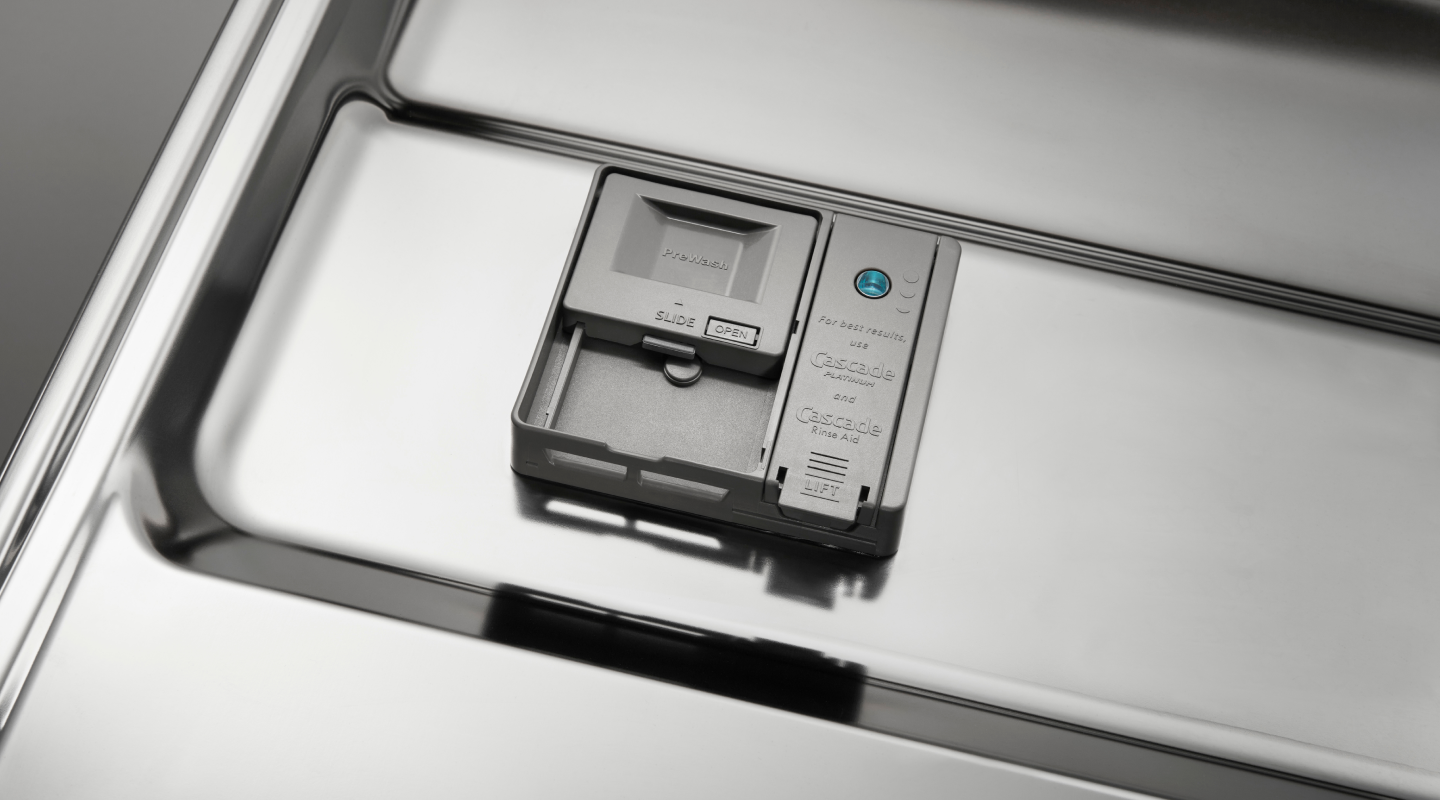

6. Detergent won't dispense
If your dishwasher dispenser isn’t functioning properly, detergent won’t be released during the wash cycle and your dishes won’t get clean. You can typically resolve this issue with the following tips:
Remove caked-on detergent: Clean out the detergent dispenser of any caked-on detergent.
Upgrade detergent storage: When powdered detergent is exposed to air it tends to clump and will not dissolve well, so be sure to store detergent in an air-tight container.
Check water temperature: Detergent dissolves in warm water. Check that your water heater is functioning properly to allow dishwasher water to reach high enough temperatures during the wash cycle.
Rearrange dishwasher racks: If the dishwasher racks are installed in a way that blocks the detergent dispenser, you need to rearrange them. Move the upper rack to a higher position to open a path for the detergent dispenser to open completely.
When to schedule dishwasher repairs
If your dishwasher still isn’t working after performing these troubleshooting tips, you may need to schedule a service call with a licensed professional to investigate the issue further. These technicians can help you determine the root cause of your dishwasher problems and advise you on the best way to proceed to get your dishwasher back in good shape.
If you have a Whirlpool® dishwasher, you can schedule a repair at the service desk.
Find Whirlpool® dishwasher replacements parts
When you run into dishwasher problems that require a few replacement parts, it is always best to use parts compatible with your machine. If you have a Whirlpool® dishwasher, you can easily browse dishwasher parts and accessories online to find the replacement your appliance needs.

Boost Cycle
Skip scrubbing and pre-rinsing
The Boost Cycle uses more water, time and heat to target tough messes that need a little extra effort
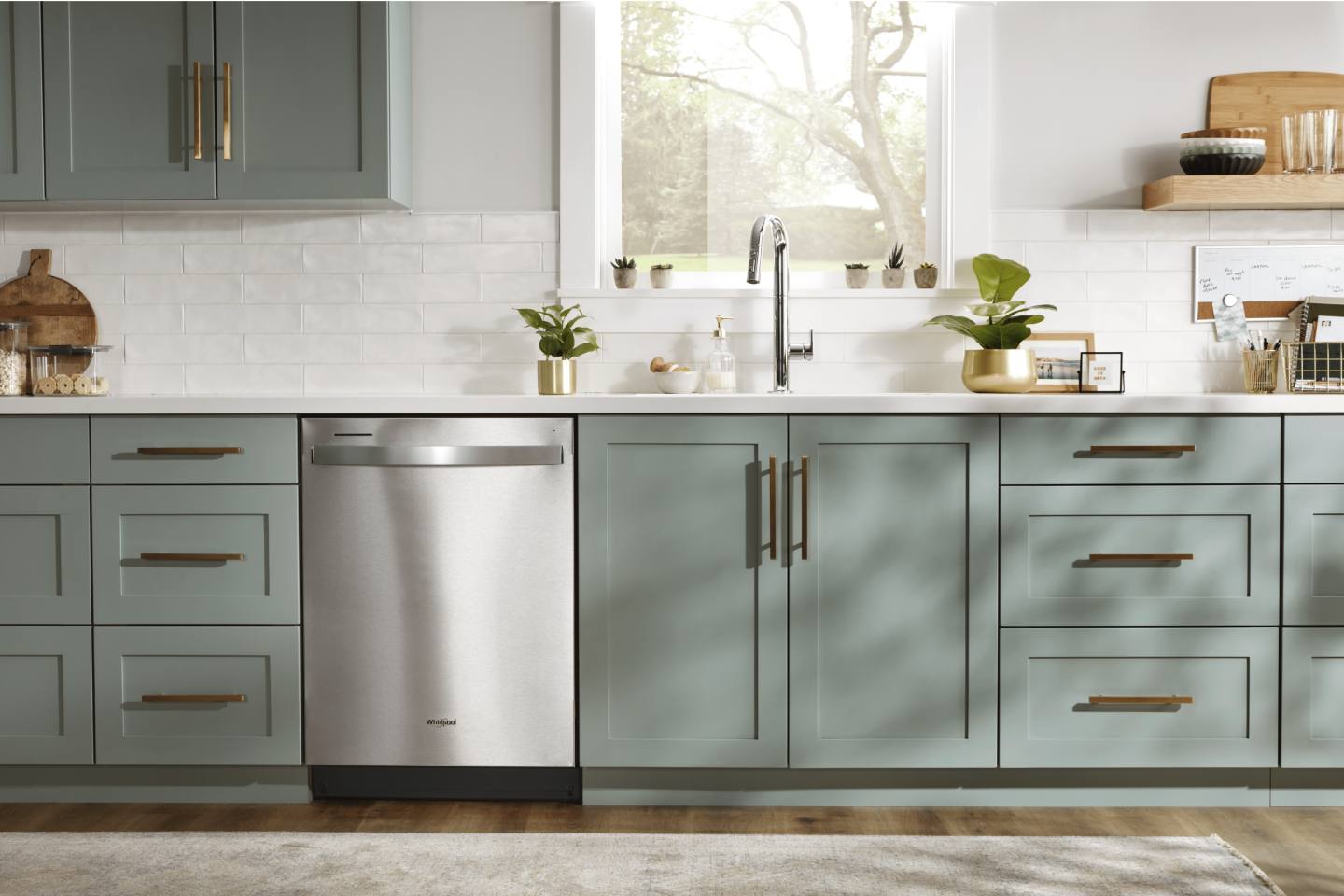

Is it worth it to fix a dishwasher?
Occasionally, dishwasher problems are a sign that you may need to upgrade your appliance. Like all machines, dishwashers have a certain lifespan, and once your dishwasher reaches a certain age it may become more expensive to keep up with repairs than it would be to replace the appliance entirely.
Find out more about how to recycle your old appliances when the time comes.
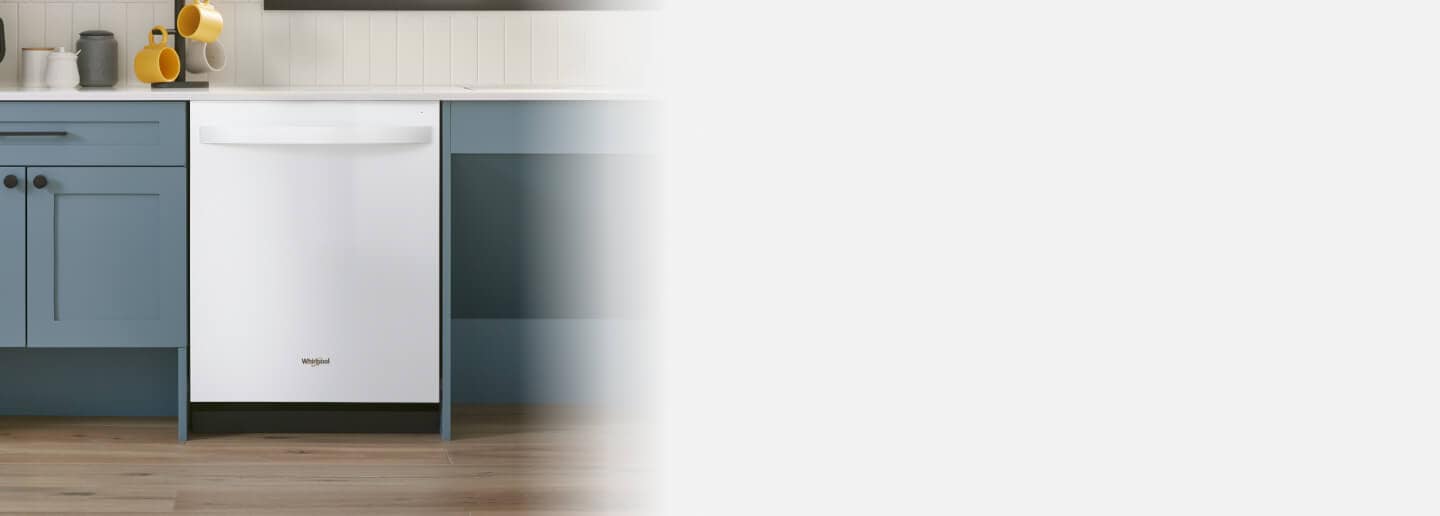
Whirlpool® Dishwashers
A dishwasher for every home
Find the right Whirlpool® Dishwasher for your kitchen to help make mealtime cleanup easier
Shop Whirlpool® dishwashers
Your dishwasher helps you keep your kitchen in order, and Whirlpool® dishwashers are here to help. Select models offer innovative features like 1-Hour Wash and Sensor Cycle that help you get dishes, glassware and utensils clean and dry after each meal. Browse the entire line to find a dishwasher with the right size, color and features for your kitchen.


Helping kids stay in school
Learn how Whirlpool helps end the dropout cycle by giving kids access to clean clothes through the Care Counts™ Laundry Program
Was this article helpful? Pass it on
Explore more from Whirlpool brand


home heartbeat
Ready for more tips, home hacks and appliance guides?
1. affresh® brand products and the recommending brands' products are all owned and distributed by Whirlpool Corporation

